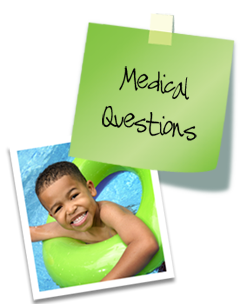Fever
Fever is often of great concern to parents. In many ways the medical community has contributed to the persistence of these myths and phobias re: fevers. According to a recent article published in Pediatrics , a medical journal for pediatricians, the persistence of myths surrounding fever persists and health care providers need to be better about counseling the parents we work with regarding the truth about fevers. This section of our website is devoted to “de-mything” the myths about fever.
Fever Myths
MYTH “Fevers can cause brain damage if too high.”
FACT: Fevers are a response of the body’s immune system and is an attempt to help protect us against invading “germs”. Only when temperatures approach 108 degrees are they associated with brain damage (this only occurs in certain situations—like being left in a hot car--- fevers that high do not occur with infections).
MYTH “We have to bring a fever down right away or it will harm our kids”
FACT: The reason we recommend medicines like Tylenol and ibuprofen to reduce fever is that high fevers tend to make our children feel awful. We want our children to feel more comfortable. Fever reducers do seem to help our children feel better. A fever that is not making a child uncomfortable does not have to be lowered with a fever reducing medicine.
MYTH “High fevers are caused by bacteria and need antibiotics right away.”
How a child looks, is much more important than the actual level of the temperature. As pediatricians, we worry much more about a child with a fever of 101 F who is difficult to awaken than a child who has a fever of 104 who is running around. Fevers of 104 F are not uncommon. As pediatricians, we see fevers this high almost every day.
Exception:
Children less than 3months old need to be seen if they get a fever (temperature >100.4 R). Babies this young are susceptible to certain types of serious bacterial infection and can get sick quickly; therefore, they need evaluation by medical personnel right away.
MYTH “If a fever goes too high, it will cause a febrile seizure”
FACT: Only a certain population of children are susceptible to febrile seizures—thought to be ~ 4%. Often, in children that are susceptible to febrile seizures, temperatures don’t have to be excessively high for them to have a seizure. They may have a seizure even if their temperature is only 101 or 102--- fevers which are common in childhood illness.
MYTH “Febrile seizures cause brain damage”
FACT: Though scary to witness, the most common febrile seizure (called a “simple” febrile seizure), lasts less than 5 minutes and causes no permanent damage.
MYTH: “If you don’t treat a fever, it will keep climbing.”
FACT: Fevers will max out at 105 and 106 and more often than not, even lower than that. The brain’s thermostat prevents it from going higher.
MYTH: “A fever that can’t be broken, is dangerous”
FACT: A fever that is persistent despite fever reducing medicines can be due to either viruses (doesn’t need antibiotics) or bacteria (does need antibiotics). Whether a fever can be “broken” or not does not distinguish between the two. Also, giving an inappropriately low dose of a fever reducing medicine is a common reason for a fever that “isn’t responding”.
MYTH: If my child has a temp of 99.0 or 100.0 F, he has a “low-grade” fever.
FACT: The true definition of a fever is anything greater than 100.4. A temperature less than that, is technically not a fever. Temperatures between 98.7 and a true fever are the result of our body’s normal temperature variations.
